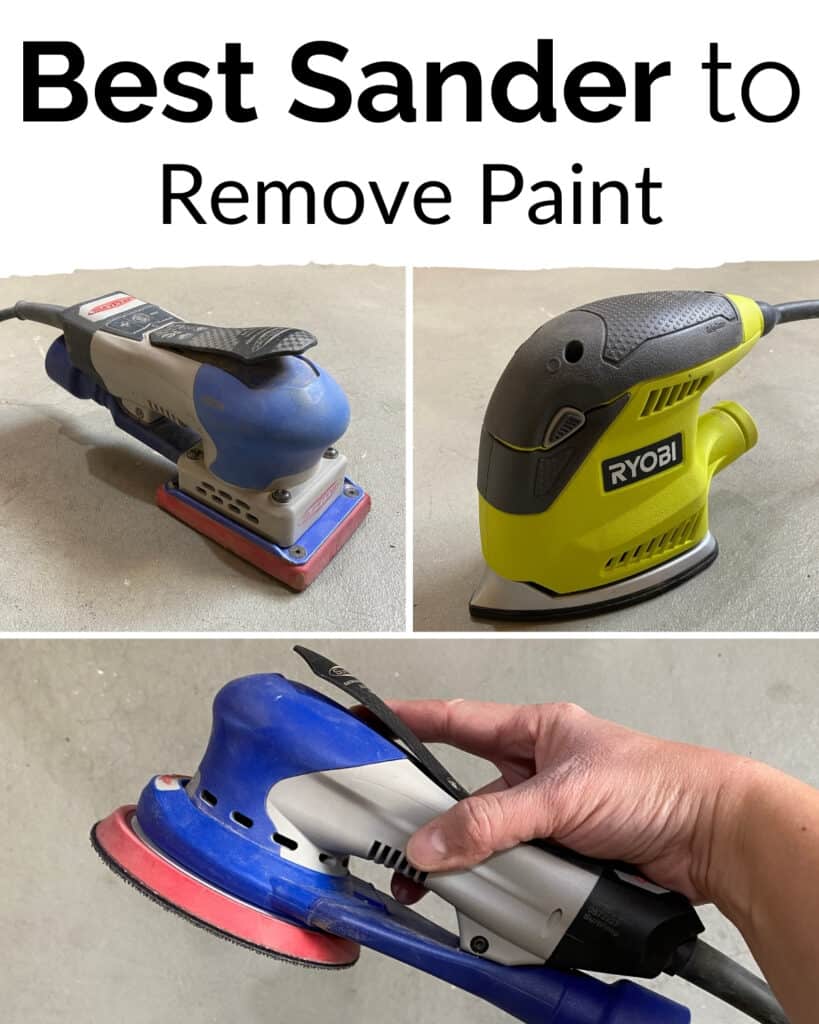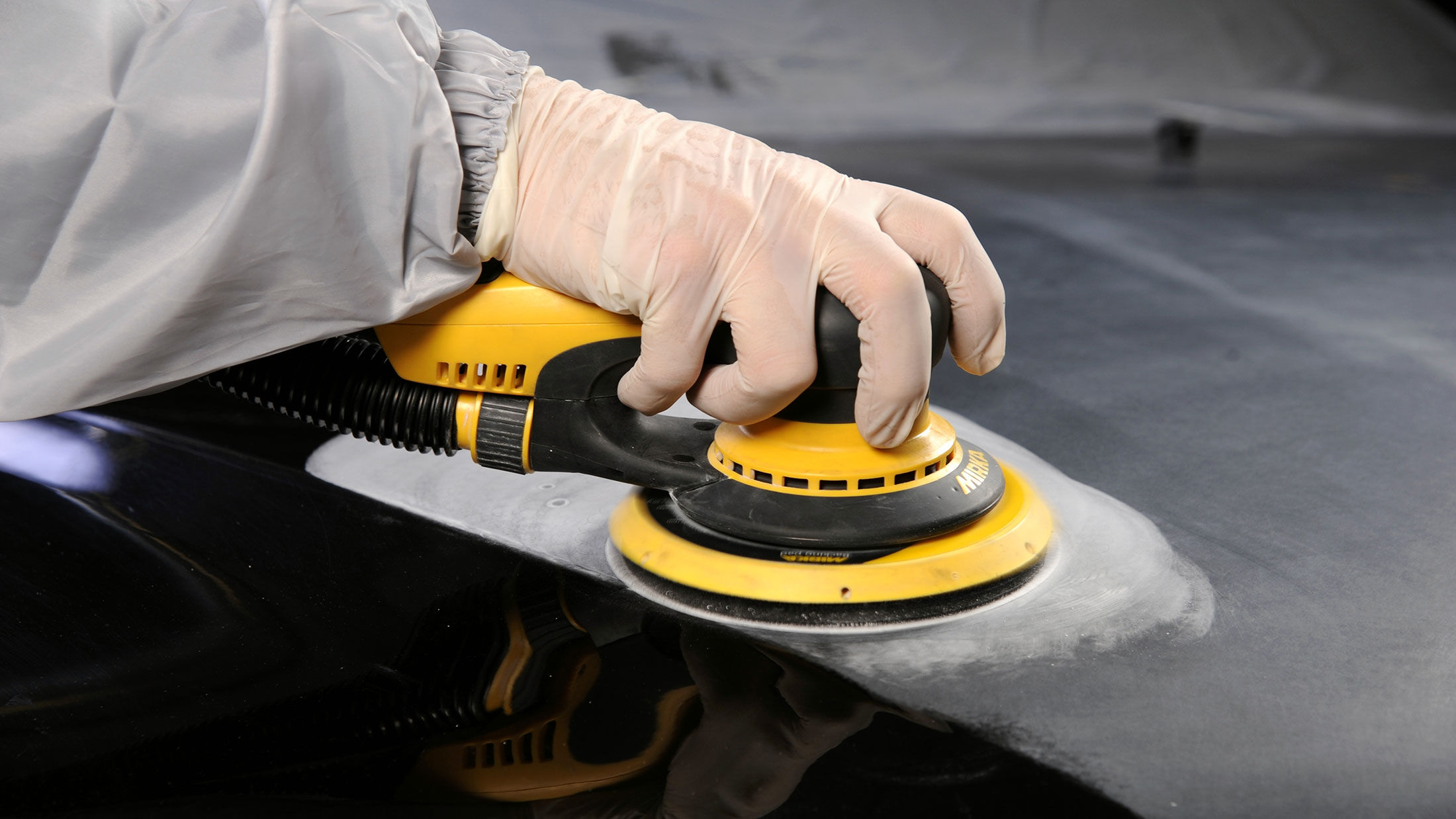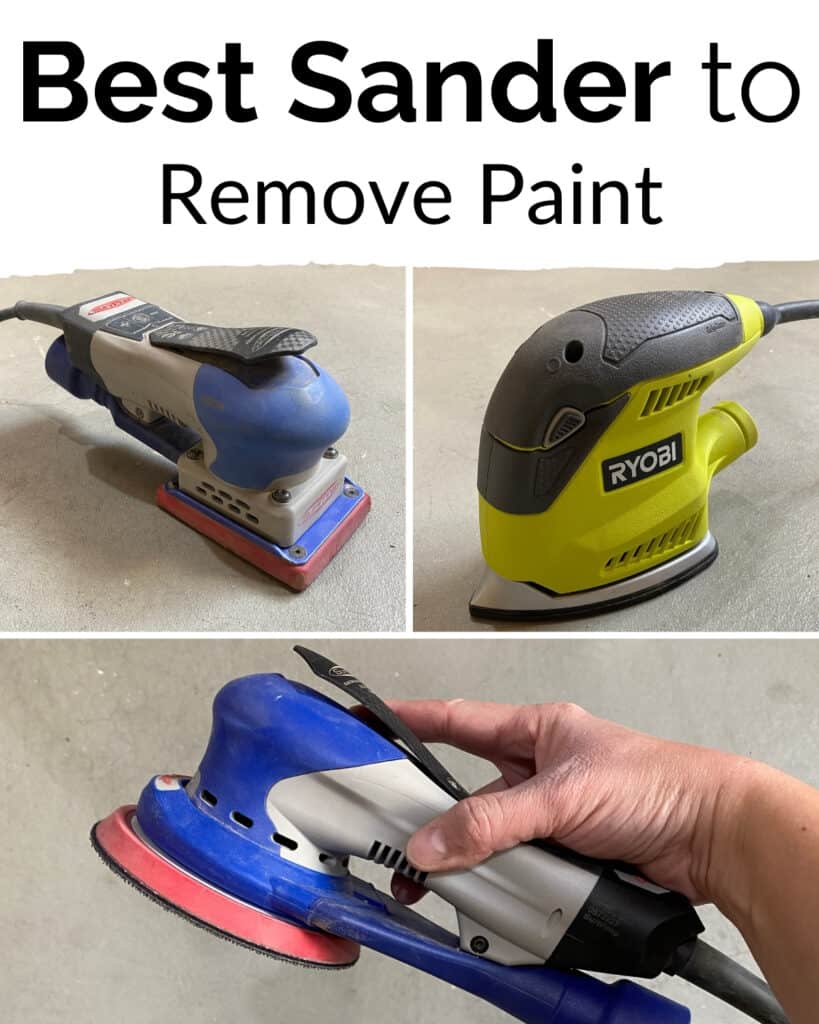Have you ever wondered if an orbital sander is good for removing paint? Well, you’ve come to the right place! In this article, we’ll dive into the world of orbital sanders and discover if they’re the superhero we need to battle those stubborn layers of paint.
Now, let me paint you a picture of what an orbital sander is. Imagine a handheld power tool that swiftly rotates and vibrates in small circular motions. It’s like a mini tornado of sanding power! But does it have what it takes to tackle the tough job of removing paint? Let’s find out!
Whether you’re a DIY enthusiast or a professional painter, removing old paint can be a real chore. But fear not, my friend, because an orbital sander might just be your secret weapon. So, let’s strap on our sanding goggles, grab our paint-stained brushes, and dive into the world of orbital sanders to see if they’re up to the task of removing paint.
An orbital sander is an excellent tool for removing paint from various surfaces. Its circular motion, combined with high-speed sanding, efficiently strips away layers of paint. The random orbital action prevents swirl marks and provides a smooth finish. With the right sandpaper grit, an orbital sander can easily tackle paint removal. Just be sure to wear protective gear and follow safety precautions. Remember to test a small area before tackling larger projects.

Is an Orbital Sander Good for Removing Paint?
Removing paint can be a challenging task, especially when it comes to larger surfaces or stubborn coatings. One popular tool that many DIY enthusiasts and professionals turn to is the orbital sander. But is an orbital sander really effective for paint removal? In this article, we will explore the capabilities of an orbital sander, its advantages and limitations, and provide you with valuable tips to ensure successful paint removal.
Understanding Orbital Sanders
Before we delve into whether an orbital sander is good for removing paint, let’s understand what an orbital sander is and how it works. An orbital sander is a power tool that operates by spinning a sanding pad in small circular motions while simultaneously vibrating the pad in an elliptical motion. This combination of movements creates an orbital pattern, providing a unique sanding action that is ideal for achieving smooth finishes on various surfaces.
The Power of an Orbital Sander
Orbital sanders are known for their versatility and effectiveness in many sanding applications. When it comes to paint removal, an orbital sander can be a valuable tool in your arsenal. The circular and vibrating motion of the sanding pad allows for efficient and controlled paint removal, even on curved or intricate surfaces. This versatility makes an orbital sander suitable for a wide range of projects, from refinishing furniture to prepping walls for a fresh coat of paint.
Moreover, the orbital sander’s design minimizes the risk of leaving noticeable sanding marks or gouges on the surface, making it a safer option compared to more aggressive sanding methods. It also offers the advantage of dust collection systems, reducing the amount of airborne dust particles during the paint removal process, resulting in a cleaner workspace and better respiratory health.
The Limitations of an Orbital Sander
While an orbital sander is a useful tool for paint removal, it does have its limitations. One key factor to consider is the type and thickness of the paint coating. Orbital sanders are most effective at removing thin layers of paint or varnish. If the paint is thick or has multiple layers, it may require additional passes or the use of more powerful equipment.
Furthermore, orbital sanders have a slower material removal rate compared to more aggressive sanders, which can be a disadvantage when tackling large or time-sensitive projects. In such cases, it may be more efficient to use a different type of sander or consider chemical paint strippers for quicker results.
Tips for Effective Paint Removal with an Orbital Sander
To ensure successful paint removal with an orbital sander, here are some crucial tips to keep in mind:
- Choose the right sandpaper grit: Selecting the appropriate grit of sandpaper is essential. Coarser grits (60-80) are ideal for removing stubborn layers of paint, while finer grits (120-150) are better for achieving a smooth finish.
- Follow the correct technique: Apply gentle pressure and let the sander do the work. Moving the sander too quickly or applying excessive force may result in uneven paint removal or damage to the surface.
- Use protective gear: Wear safety glasses and a dust mask to protect your eyes and lungs from dust particles.
- Consider using a paint stripper: If the paint is particularly stubborn or multiple layers need to be removed, combining the use of a paint stripper with an orbital sander can speed up the process.
- Perform a test area: Before tackling the entire surface, it’s recommended to test the orbital sander on a small, inconspicuous area to ensure the desired results and avoid any potential damage.
Pros and Cons of Using an Orbital Sander for Paint Removal
Benefits of Using an Orbital Sander for Paint Removal
There are several advantages to using an orbital sander for paint removal:
- Versatility: Orbital sanders can be used on a variety of surfaces, including wood, metal, and plastic.
- Controlled sanding action: The orbital motion minimizes the risk of sanding marks and allows for precise control.
- Dust collection: Most orbital sanders come equipped with a dust collection system, reducing cleanup time and improving air quality.
- Less aggressive: Orbital sanders are less likely to damage the surface compared to other sanding methods.
Drawbacks of Using an Orbital Sander for Paint Removal
Despite its advantages, there are a few drawbacks to keep in mind when using an orbital sander for paint removal:
- Slower material removal rate: Orbital sanders are not as efficient as more aggressive sanders when it comes to removing thick layers of paint.
- Not suitable for all paint types: Some paint coatings may be better suited for chemical strippers or other sanding methods.
- Requires multiple passes: Depending on the thickness of the paint, several passes with the orbital sander may be necessary to achieve complete removal.
Conclusion
An orbital sander can be a reliable tool for paint removal, offering versatility, controlled sanding action, and the added benefit of dust collection. However, its effectiveness may vary depending on factors such as paint thickness and the type of surface being worked on. By following the correct technique and considering the limitations of an orbital sander, you can achieve successful paint removal and enjoy a smooth finish on your project.
Key Takeaways
- An orbital sander is a good tool for removing paint.
- It is effective in stripping paint from various surfaces such as wood, metal, and even drywall.
- Using different grit sandpaper allows for different levels of paint removal.
- However, caution must be taken not to damage the underlying material while removing paint with an orbital sander.
- Wearing appropriate safety gear, such as safety goggles and a dust mask, is essential when using an orbital sander to remove paint.
Frequently Asked Questions
Below are some common questions related to using an orbital sander for paint removal:
Can an orbital sander effectively remove paint from surfaces?
Yes, an orbital sander is a great tool for removing paint from surfaces. Its random orbital motion, combined with the sanding pad’s rotation, allows for efficient and even paint removal. The circular pattern helps prevent marks and swirls, resulting in a smooth finish. Keep in mind that orbital sanders work best on large, flat surfaces.
It’s important to select the appropriate grit sandpaper for the job. Coarse sandpaper (low grit) will remove the paint faster, but may also leave deeper scratches. Finer sandpaper (high grit) will provide a smoother finish, but may require more time and effort. Experiment with different grits to find the right balance for your specific project.
Can I use an orbital sander to remove lead-based paint?
When dealing with lead-based paint, it’s essential to take proper precautions to avoid lead exposure. Sanding lead-based paint can release hazardous dust into the air, which can be harmful if inhaled or ingested. It is generally recommended to use alternative methods, like chemical stripping or wet scraping, to remove lead-based paint.
If you decide to use an orbital sander on surfaces with lead-based paint, you should use a sander equipped with a HEPA filter to minimize dust emissions. Additionally, be sure to wear appropriate protective gear, such as a respirator and gloves, and follow proper lead-safe work practices to ensure your safety and the safety of others.
Is it necessary to prepare the surface before using an orbital sander for paint removal?
Preparing the surface before using an orbital sander is crucial for optimal paint removal. Start by cleaning the surface to remove any dirt, dust, or loose particles. This helps prevent the sander from getting clogged or causing uneven sanding. You can use a brush, vacuum, or damp cloth to clean the surface.
If the surface has any flaking or peeling paint, it’s recommended to scrape away the loose paint manually before using the orbital sander. This ensures a smoother and more efficient sanding process. Once the surface is clean and any loose paint has been removed, you can begin sanding with the orbital sander.
What safety precautions should I take when using an orbital sander for paint removal?
When using an orbital sander for paint removal, it’s important to prioritize safety. Always wear safety goggles to protect your eyes from flying debris. Additionally, consider wearing a dust mask or respirator to prevent inhaling fine particles or harmful dust.
Ensure that you have a firm grip on the sander and maintain proper control throughout the sanding process. Avoid applying excessive pressure, as the sander’s weight and motion should do the work for you. Take breaks if needed, as prolonged sanding can lead to fatigue. Finally, be aware of your surroundings and keep others at a safe distance to avoid accidents or injuries.
Can I use an orbital sander to remove paint from delicate surfaces?
While an orbital sander is effective for paint removal, it may not be suitable for delicate surfaces that can easily be damaged. Delicate surfaces, such as thin veneers or antique furniture, require more gentle methods to avoid causing harm.
For delicate surfaces, it is generally recommended to use alternative methods like chemical stripping or hand sanding with a fine-grit sandpaper. These methods allow for greater control and minimize the risk of damage. If you’re unsure about using an orbital sander on a delicate surface, it’s best to consult a professional or try a test patch in an inconspicuous area before proceeding with the entire surface.

Summary
Orbital sanders can be a good option for removing paint from surfaces. They work by quickly moving in small circles, making it easier to strip away paint. However, it’s important to remember that an orbital sander may not be suitable for all types of paint removal jobs.
Before using one, consider the type of paint and the surface you’re working on. If you’re dealing with thick or stubborn paint, you may need to use other methods like chemical strippers or heat guns. Safety precautions are also crucial when using any paint removal tools, so always wear protective gear and follow the manufacturer’s instructions.
In conclusion, while an orbital sander can be effective at removing paint in many cases, it’s essential to assess the specific circumstances and select the appropriate method accordingly.
